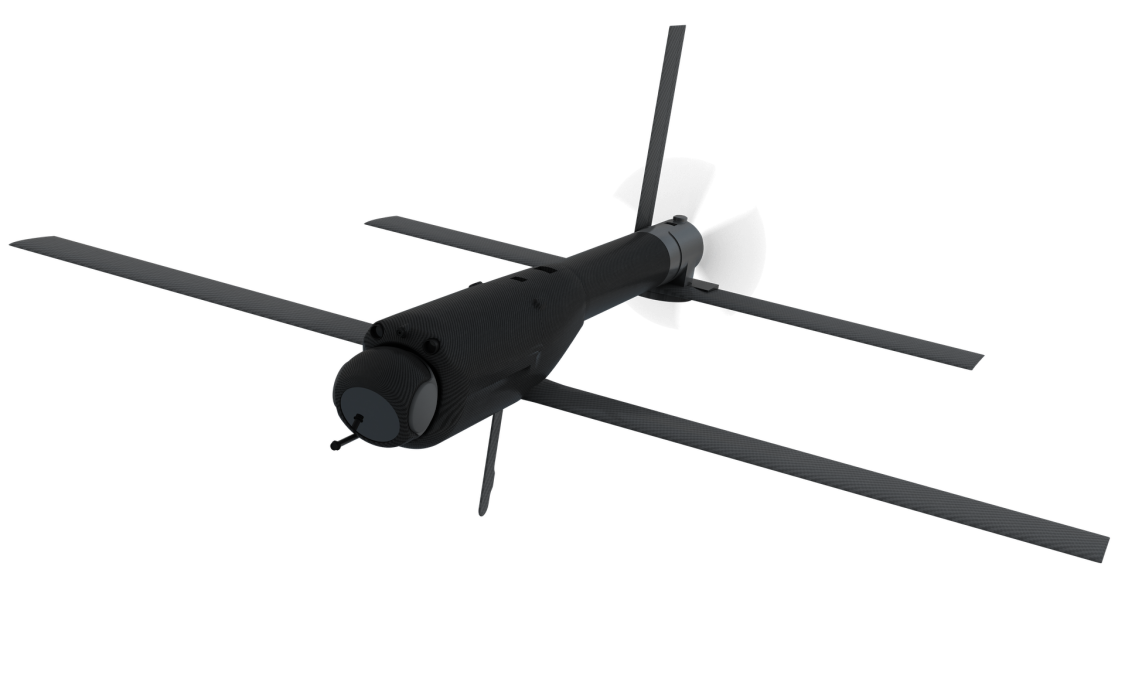JON HARPER

The Army is asking lawmakers for $120.6 million to procure Low Altitude Stalking and Strike Ordnance (LASSO) production systems in fiscal 2025 as the U.S. military moves to beef up its arsenal of loitering munitions.
LASSO is a new-start program for fiscal 2025 that’s part of the service’s vision for a family of low-altitude UAS that are “semi-autonomous (human-in-the-loop) unmanned aerial systems that improves the Infantry Brigade Combat Team (IBCT) lethality in terms of stand-off and destruction against dismounted formations, armored vehicles, and tanks,” according to newly released budget justification documents.
The goal of the project is to make infantry brigades as lethal as armored brigades, according to the Army.
Unlike traditional munitions, loitering munitions — also known as kamikaze drones or one-way attack UAS — can fly around until they identify a target. And unlike armed unmanned aerial systems that launch missiles, kamikaze drones destroy their target by crashing into it. They can be armed with a warhead to enhance their potency.
The Army describes the LASSO capability as a lightweight, man-portable weapon that can operate day or night. It includes all-up rounds with a launch-and-delivery system and payload.
It also comes with a fire control system that consists of the fire control unit, ground data link and terminal, and other ancillary equipment.
“LASSO can range less than or equal to 20km (straight line with auxiliary antenna) with a flight endurance that enables the Soldier to make multiple orbits within the IBCT typically assigned battlespace, to acquire and attack targets within and beyond current crew served and small arms fire. The range/endurance enables the unit to utilize reach back capability and maximize standoff … from enemy fires, significantly reducing risk to the Soldier,” according to budget justification documents.
“Unlike existing direct and indirect fire weapon systems, LASSO’s discreet payload and unique capability delivers Soldiers the ability to abort against targets in a dynamic situation (e.g., use of human shields) or prosecute targets that would have been deemed non-viable in past due to the higher collateral damage associated with alternative munitions,” officials wrote. “The LASSO base capability will be optimized to defeat tanks rapidly and precisely for IBCTs. Follow on increments will support future capabilities for company and below echelons. Future increments will focus on additional range increases, enhanced lethality, and advanced payload options (personnel, hard sites, etc.).”
The $121 million that the Army is requesting would support the procurement of 54 fire control units, 434 all-up rounds and 144 reconnaissance, surveillance and target acquisition components.
The Army has picked AeroVironment’s Switchblade 600 for the first increment of LASSO. However, the service doesn’t intend for it to be a winner-take-all program for industry.
“We’re gonna have multiple variants and we’re gonna have competition. So, to meet the urgent need, we’ve gone sole source to a limited number of SB 600, which is a very good system. But there’s a lot of companies in this space with a lot of good tech. So, we want to have really continuous competition because different companies have things that fit different parts of the mission space better … This is one where I think it’d be unwise to pick one at the start and just say, ‘Nope, this is it. Nobody else gets anything. This one company is it.’ There’s too much competition in this space. We want to leverage that innovation,” Assistant Secretary of the Army for Acquisition, Logistics and Technology Doug Bush said in an interview with DefenseScoop at the Reagan National Defense Forum in December.
For loitering munitions with modular payloads, the Army would like to retain some flexibility on what those payloads are, based on the service’s needs, Bush said last week during a meeting with reporters to preview the fiscal 2025 budget request.
“We might be heavy one year in [intelligence, surveillance and reconnaissance] and heavy the next year on strike,” he said.
The newly released budget justification documents did not include any additional funding for LASSO beyond fiscal 2025.
No comments:
Post a Comment